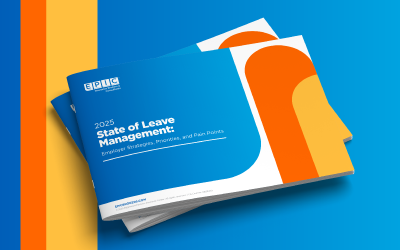There’s a lot for your employees to think about regarding the future of their career (in addition to having a child grow inside of them!). Determine how valuable your employees are to you and to what degree their personal and professional lives matter. It stands to reason that employees who are happier personally will be so professionally, thus better able to serve the business and clients. You’ll want to keep them around and attract new top talent with your benefits. Consider this when writing your maternity and paternity leave policies and voluntary benefits offerings. STD offered on a post-tax payout schedule (meaning that when the employee receives the benefit, they do not have to pay taxes on it) is definitely something that all employers should think about.
Viewpoints from Allison Hasday
As I get farther along into my pregnancy, I’ve been thinking more about family leave benefits and policies and how they affect not only me but families across the country. It’s not uncommon for employers to offer health plans that cover fertility benefits, and a more recent trend is to expand coverage to surrogacy benefits as my colleague, Adam Okun, blogged about recently. But what awaits working parents after a pregnancy has successfully come to term?
Take my situation, for example – because my employer has at least 50 employees within a 75-mile radius of my worksite and I’ve been employed over 12 months and met the 1,250-workhour requirement, I qualify for federal Family and Medical Leave Act (FMLA) protections, which cap out at 12 weeks.
But FMLA only requires my employer to maintain my position and health coverage until I get back from maternity leave. FMLA doesn’t provide income while I’m out recovering from childbirth and caring for my infant. I’m also a New York resident so I qualify for New York State disability, which provides peanuts of coverage (50% of your weekly salary, capped at $170 per week, up to 26 weeks) and no job protection. Once my New York State disability benefit is exhausted, I can apply for New York State paid family leave (PFL) which offers job protection, allows me to care for a family member or bond with a new child, and pays up to 60% of weekly wages (capped at $840.70 per week, for up to 10 weeks for the year 2020).
The option for additional, voluntary short-term disability (STD) coverage exists, but only for those who happened to sign up during their most recent open enrollment and get the timing right (by the way, voluntary STD is relatively cheap in the grand scheme of things and I believe employees should be encouraged to elect this coverage every year). Employers should make it clear to employees whether these benefits have an annual or one-time election opportunity.
Talking to many of my female colleagues who had children 20+ years ago, it seems we’ve come a long way for family rights in the workplace, but we still have a long way to go. Countries in Eastern Europe and Scandinavia are light years ahead of a progressive state like New York, which is one of a handful of states with paid family leave.
Related Content
Products
Employee Benefits Consulting
Our dedicated benefits team is focused on delivering better outcomes – to both your benefits program and ...
Industries
Healthcare
Our healthcare practice is known around the world for its expertise and passion in delivering exceptional ...
Products
Pharmacy Solutions
Our Pharmacy Consulting Practice helps companies navigate the unique complexities of expertly managing the ...



